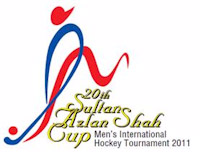Azlan on its 20: Fabulous, fairy tale razzmatazz
Share
Azlan is on its 20th edition: Fabulous, fairy tale razzmatazz
Not many tournaments in the world of hockey have the reputation of surviving after initial euphoria. Being amateur in spirit and action, field hockey could not afford to galaxy of tournaments to cater to its fans. Only contests that survived, or survives, are those which carry the world body’s label such as Champions Trophy, which comes outside the regulars such as Olympics, World Cup and Continental events.

This is where Sultan Azlan Shah Cup, put on board in 1983, scores. It’s a stand alone invitation tournament that survived time, and satiated the event-starved hockey fans.
That the proud possession of Asia is now on its twentieth edition, having till now seen 19 wonderful winners. Fittingly, this year has wonderful line up, seven top teams with full strength.
A walk down the memory lane fills one with pride and nostalgia.
The Sultan Azlan Shah Cup, the biggest tournament in the Asian Hockey Federation calendar, is the Malaysian Hockey Federation’s baby, which it conceived to cater to their domestic needs. Though initially known after the host city or a name denoting the number of teams in the field, it was later named after Sultan Azlan Shah. Field hockey is one of the popular sports in Malaysia and it also elicits patronage from the elite rulers. It was, therefore, in the fitness of things that the tournament was named after one of its kings Raja Sultan Azlan Shah, who headed the Asian Hockey Federation for long and the MHF then. Besides being a great hockey fan, Azlan Shah also lends his personality to the development of hockey, discharging many prestigious national and global assignments.
Though originally contemplated as a bi-annual event, as the enthusiasm grew the Azlan Cup became an annual affair since 1994. Indira Gandhi Gold Cup was the only other international tournament in those times but the Indian event was discontinued after 1995. The inaugural edition, known as Pentangular Tournament as five nations took part, was held at Kuala Lumpur from August 21 to 28, 1983. India and Pakistan played the first match which ended in a 1-1 draw. Rajinder Singh (Jr.), Indian coach for the 2005 edition, was among the proud participants of that match. Ric Charlesworth’s Australia won all four round-robin matches
and then defeated the reigning World Cup holders Pakistan 1-0 in the final to lift the Cup, then called as Raja Tun Azlan Trophy. The winning goal came from the stick of Terry Walsh.
Ten years after winning the World Cup in Malaysia, India again became toast of that country when it lifted the second Azlan Cup in Ipoh in the fag end of 1985. India defeated defending champions Australia 4-3 in its pool before firing Pakistan in the semis (1-0). It was the hosts who faced defeat (4-2) in the final on 3rd December. India won the Cup twice since then. A week after India’s win, Azlan Shah, MHF president and FIH Vice-President, was crowned as Sultan of Perak and became the Deputy King of Malaysia.
Germany became the first European nation to engrave its name on the Cup in 1987 at Perak. Next edition due for 1989 was not staged, perhaps the dates clashed with the onset of the annual Indira International Gold Cup in India. When it was revived in 1991, celebrated coach Balkrishen Singh’s India won the six-nation round robin event without giving away a point. India defeated Pakistan, courtesy Mukesh Kumar’s only goal, and USSR on its way to podium.
England’s turn it was in 1994 before India was once again on the victor’s podium in 1995. All the teams in the 1995 event were rather experimental ones, a rare thing in the history of the Cup. Goalie Ashish Ballal blocked greenhorn Michael Green’s stroke in the tie-breaker for India’s third and till date, the last title.
Eight editions were staged in the nine-year interregnum between 1996 and 2004, 1997 being the blank occasion. Pakistan won the title successively twice (1999 and 2000, 2002 and 2003), a feat no other country could match.
The 2004 number was won by Australia in January and six months later they were at heavens in Athens. Like in the past, victory in Azlan proved to be the stepping stone for greater glory for the Aussies. They again won the title in 2005.

Australia’s dominance continued in 2007 also. In the 2008 editon at Ipoh, Argentna put it across India in the final through golden goal. Canada, New Zealand, Pakistan, all qualified for the Beijing Olympics were in the fray.
In 2009, held a month before the Asia Cup, India won the Cup and it missed another outright title win next year when rains prevented what was expected to be a grand battle between India and Korea.
Azlan Cup is perhaps the only tournament in the world that provided airfare for the invited teams besides free hospitality for long time. Secondly, the organisers strictly ensure participation of national sides; violators have been sternly sidelined for the future editions. This policy helped the tournament grow in stature.
Normally timed before major global events such as the World Cup or the Olympics, it drew worthy teams and the participants too took the tournament with the seriousness it deserved.
Having seen so much action on the field, tremendous support from Sultan Azlan Shah himself, the event carved a niche for itself in the sporting history of Malaysia, if not the Asia.
One immediate task that, if accomplished will help it grow further and make it a commercial success, is to put on plan to telecast the matches to as much countries as possible.
However, the annual feature of Malaysia, the Azlan Cup, is a veritable window for future of Asian Hockey is an established fact, and it cannot be denied.


